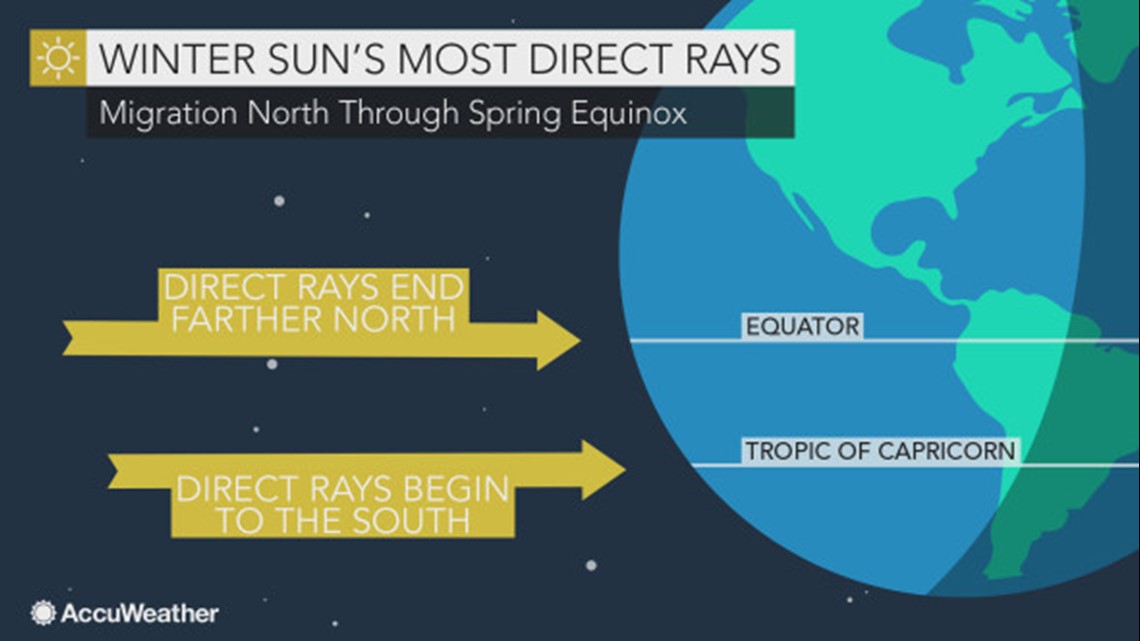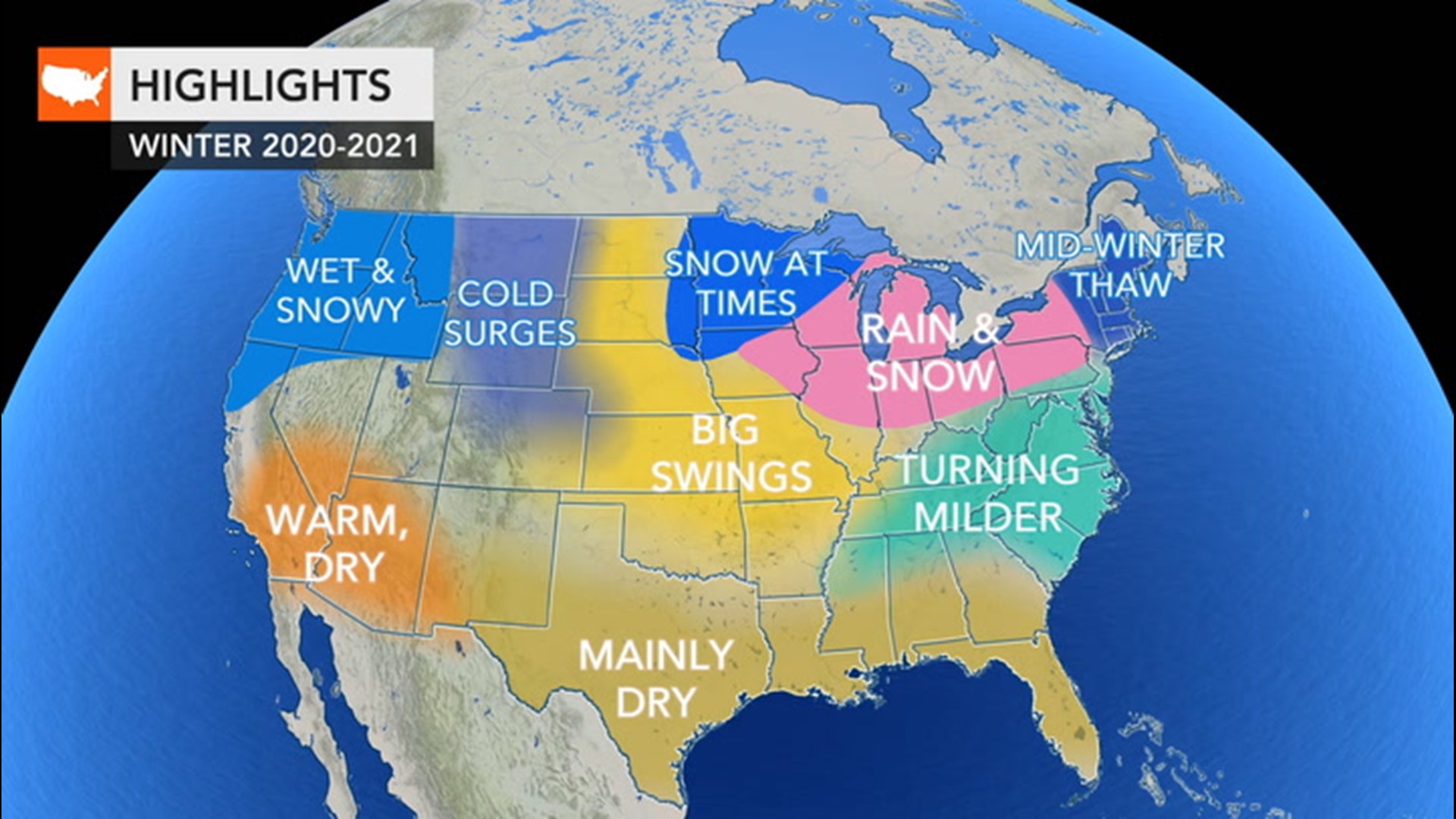Daylight is dwindling across the Northern Hemisphere with the darkest day of 2020 right around the corner, a day that marks the start of a new season, but only by one of many definitions.
The solstice occurs on Dec. 21 at 5:02 a.m. EST when the sun's rays are most direct over the Tropic of Capricorn in the Southern Hemisphere. It's the counterpart to the June solstice when the light from the sun is focused more on the Northern Hemisphere.
This event marks the commencement of astronomical winter north of the equator and the beginning of astronomical summer south of the equator.


"Traditionally, it's assumed that winter starts on Dec. 21 which is [when] the sun is farthest south, over 23.5 degrees south latitude," said Dr. Joel N. Myers, founder and chief executive officer of AccuWeather. "That means that the sunshine in the Northern Hemisphere is least intense on that day, the weakest, and the days are the shortest."
For most of the contiguous United States, the year's shortest day features less than 10 hours of sunlight, but that number is lower for areas closer to the Arctic Circle. After crossing this boundary, located in far northern Canada and northern Alaska, areas can go days or even weeks without direct sunlight surrounding the December solstice.
The lack of sunlight means that temperatures cannot get as high during the afternoon, it takes longer for snow and ice to melt on a cloudless day and that people that are outside do not get as much natural vitamin D from the sun as they would receive during other times of the year.
A different way to look at winter is to focus on the incoming sunlight rather than an astronomical happening. This is known as solar winter.
"Solar winter refers to when the least amount of sunlight is reaching the Earth's surface," AccuWeather Meteorologist Brett Rossio said.
In this definition of winter, the December solstice marks the midway point of the season, rather than the beginning. Solar winter starts around 45 days before the solstice and lasts for another 45 days afterwards. This is roughly Nov. 6 through Feb. 4.
"However, there is a lag to winter where temperatures are coldest," Rossio added. Atmospheric temperatures are typically lowest during January and February.
The start and end of astronomical and solar seasons depend on variables that can differ slightly every year, so weather forecasters also use a system that is more consistent on a year-to-year basis.
The four meteorological seasons are broken up into nearly equal three-month periods decided by the calendar. Every year, meteorological winter starts on Dec. 1 and ends when the calendar flips from February to March.
"By following the civil calendar and having less variation in season length and season start, it becomes much easier to calculate seasonal statistics from the monthly statistics, both of which are very useful for agriculture, commerce and a variety of other purposes," the National Centers for Environmental Information (NCEI) explained.
No matter how you slice it, winter is the darkest time of the year, and the reduced sunlight and UV rays may be a factor garnering extra speculation this year.
"It's particularly relevant now because of COVID-19, and if the intensity of the sunshine ultraviolet kills some of the virus, we're into the period we have less sunshine," Myers said.
The reduction of sunlight can also lead to seasonal affective disorder (SAD).
"Many people go through short periods of time where they feel sad or not like their usual selves. Sometimes, these mood changes begin and end when the seasons change," the National Institute of Mental Health (NIMH) explained.
"People may start to feel 'down' when the days get shorter in the fall and winter (also called 'winter blues') and begin to feel better in the spring, with longer daylight hours," the NIMH said.
However, there are some benefits to the longer nights, especially for stargazers who don't mind the frigid, wintry conditions.
Those who brave the cold, wintry weather are rewarded with crystal-clear views of the heavens when compared to the summer months as lower humidity leads to better views of the night sky.
The passing of the solstice will also mark the start of the long climb out of the darkness -- when the days will slowly but surely become longer and longer over the six months leading up to the solstice on June 20, 2021.

